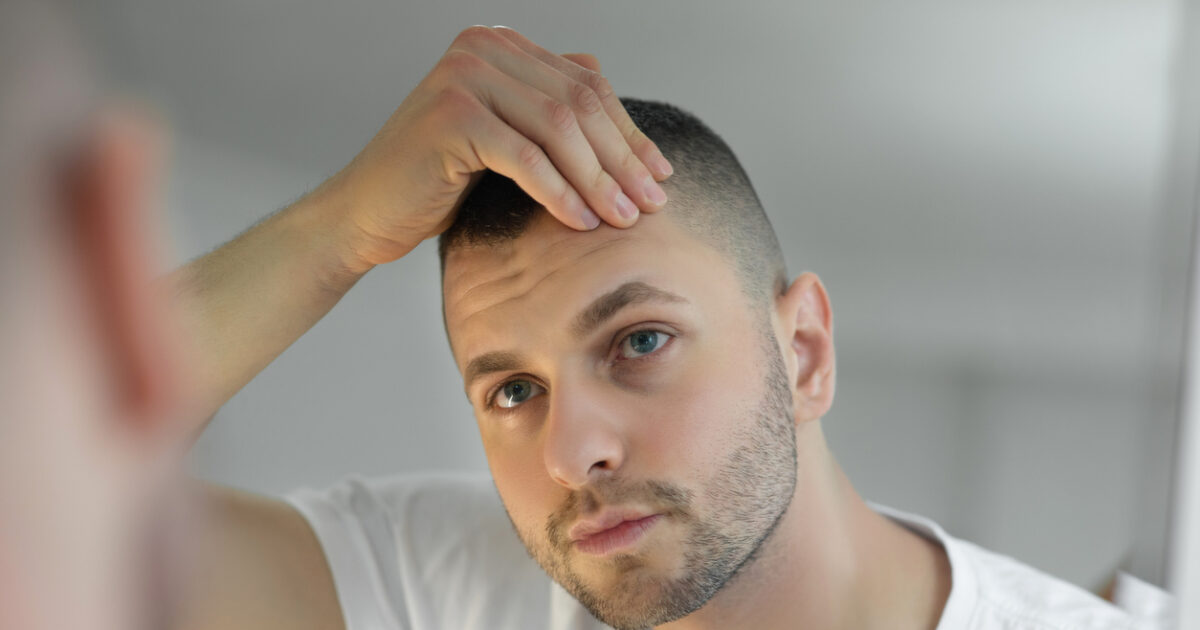Intense emotional hassle, which affects many areas of life, suffer people with diseases in his scalp head their. Patients feel embarrassed and anxiety, anxiety, depression and other problems that revolve around their identity. For children and adolescents, their existence is a complex challenge, as they are already having difficulty shaping their identity.
Although many of these diseases are not a significant medical risk, the importance of hair for the social environment can even lead to difficult management psychological problems. “The state of scalp and hair has a strong impact on the psychology of people of all ages and gender. When the hair is dense, shiny and loud, we are more confident and satisfied with our appearance. On the contrary, if we have problems such as dandruff or hair dilution, the image we have of ourselves is shaken. Therefore, our scalp health is an integral part of our physical, mental and emotional well -being, “says Dermatologist – Aphrodisiologist Dr. Christos Stamou.
Its preventive and consistent care, as well as the diagnosis and control of the skin problems that occur is the key to enhancing self -esteem. In addition to aesthetics, it can improve self -perception and become a source of positivity, enhancing levels of self -esteem.
Many types of scalp diseases have similar symptoms, such as itching, inflammation and peeling, who confuse the sufferer, resulting in the application of inappropriate therapies and the extension of his suffering. Their valid and timely recognition by a dermatologist speeds up healing and ultimately improving the quality of life.
Skin diseases that have a significant psychological impact
Dandruff
Dandruff is one of the most common diseases of the scalp, as about half show it. Its characteristic is exfoliation and itching, symptoms caused by the rapid elimination of dead cells.
Its causes have not been clarified. It is not due to poor hygiene, but to a number of genetic and environmental factors. It can also be caused by sensitivity to hair products or fungal infections such as Malassezia.
Seborrheic dermatitis
Seborrheic dermatitis is a severe form of dandruffonly limited to scalp, but can affect the face, lips, eyelids, and even chest. It appears as mild red plates on the skin, accompanied by fatty yellow-white scales in people of all ages.
This inflammatory disorder can be caused by stress, hormonal changes or sebum overproduction, as well as by the Malassezia fungus.
Psoriasis
Psoriasis is another important condition that leads to rapid renewal of skin cells, resulting in thick pink or red plates with white, silver scales.
It is an autoimmune disorder that has periods of recession and exacerbation. While psoriasis can affect any area of the body, but up to 80% of patients with psoriasis have psoriasis on the scalp – often around the hair line.
Androgenetic alopecia
Androgenetic alopecia is the most common cause of hair loss in both men and women. The condition affects 30% to 50% of men up to the age of 50 – but is not limited to them. While in them hair loss starts with the temples forming an M shape, women cause hair thinning and hair dilution.
The condition more affects men, who can start at the age of only 20, than women, who begin after 50.
Genetic and hormonal factors are responsible for its appearance, stress, taking certain drugs, autoimmune diseases, eating disorders and shortages of nutrients.
Alopecia
Gynecid alopecia, an autoimmune disorder that causes sudden loss of hair from the head, face and other areas of the body. The body’s immune system attacks hair follicles, causing them to shrink in size and dramatic slowdown in hair growth.
Damage to the pockets is usually not permanent – most patients recover after several months. In severe cases, the entire scalp can be affected, leading to complete baldness.
Folliculitis
Thylicitis is an infection of the hair follicles on the scalp characterized by inflammation of the hair follicles. It occurs on the scalp but more often on the beard, hands, back, buttocks and legs due to bacterial, parasitic or fungal infection.
Symptoms include redness, swelling, itching and bumps that resemble pimples full of pus and a hair in them. These bumps can be sensitive or even painful.
“The scalp has similar needs for hydration, cleanliness and balanced oil production with the rest of the skin. Protection from harmful environmental factors, such as excessive sun exposure or pollution, also plays a role in maintaining his health.
When not protected and properly cared for, skin problems are more likely to occur both on its limits and beyond the scalp, such as acne on the forehead.
The appearance of certain diseases, of course, escapes our sphere of influence. However, there are many options for the treatment or management of symptoms. Patients should accelerate the diagnosis, as the initiation of treatment at an early stage ensures the faster recession or complete healing before their mental health is shaken, ”concludes Dr. Stamou.
